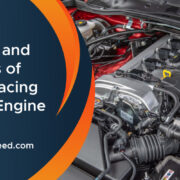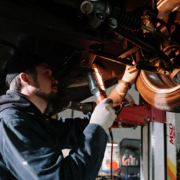Tire balance is a critical maintenance task that can help improve the longevity of your tires. Unfortunately, many drivers don’t know how much this service costs or what they should expect when getting it done.
So, how much does tire balance cost? Here are the details you need to know:
The price of a tire balance depends on who performs the service and where you live. You’ll also need to consider any additional fees, like taxes or inspections.
Tire balance prices vary from place to place, but generally range from $30 to $50 per tire. Some shops charge more for larger vehicles or multiple-tire services.
The most common reason for needing a new set of tires is due to wear and tear from driving on them all winter long. This wear can happen quickly, so it’s important to replace your tires as soon as possible before they become damaged beyond repair.
Table of Contents
How Long Does It Take To Balance Tires?
Tire balancing is a simple procedure by keeping in mind ‘’how much does tire balance cost’’. It takes only a few minutes to finish, but the process can be a little tricky at times. However, if you follow these instructions carefully, you’ll get the job done in no time at all.
Step 1: Remove the valve caps from both tires and remove the valve cores from both tires.
Step 2: Place one side of each tire inside a tire press or other similar device and tighten down the safety nuts until they are firmly secured in place.
Step 3: Place one end of a tire iron inside each tire and push it up against the valve core until it is flush with its corresponding rim surface. Repeat this process on both sides of each tire to ensure even pressure distribution along its length.
Step 4: Once you’ve finished tightening down your safety nuts, remove them from each tire using your hands or a wrench so that you can replace them with new ones once they’re ready for use again.
4 Rules You Should Always Follow To Balance Tires
Here are four rules you should always follow to balance tires:
Tire Pressure
You should always follow the manufacturer’s recommended pressure when adjusting tire pressure. It’s important to maintain the correct inflation pressure of your tires to ensure they are properly functioning and safe.
The ideal tire pressure is the maximum amount of air that can be contained within a tire. This is done by measuring the air pressure inside each tire with a gauge. The higher the number, the greater amount of pressure is being used.
If you find yourself having to add more air than normal, you may have a problem with your tires. Check your tread depth, wear level, and age before adjusting your tires’ inflation level. The proper way to gauge whether or not you need new tires is by comparing their tread depth with the manufacturer’s specifications for your vehicle model.
Tire Tread Wear
If you are a tire tread wear, it’s important to know the tread wear you should follow to balance tires.
Tread wear is an important part of balancing tires. It’s a simple concept but one that is easily overlooked because it’s not something that can be seen or felt. However, it’s something that can affect the performance and life of your tires significantly.
The most common way of measuring tread wear is by using a tread depth gauge. This gauge will measure how far into your tread depth has been worn away over time and give you an idea of what kind of wear pattern your tire has been experiencing. This can help you better understand how much does tire balance cost and how much longer your tires will last before needing replacement or re-balancing.
Cleaning Tips
It’s easy to understand why people who drive cars would want their tires to look good and last a long time. After all, a car with bald tires is a riskier proposition on the road, and you could face penalties if you get caught with underinflated tires.
But what about cleaning those same tires? Will they last longer if you take care of them? How much does tire balance cost?
The short answer is yes — it’s just another benefit of balancing your tires.
To clean your tires, first you’ll want to make sure that you’re doing it right. If you have an air compressor, you’ll need it for this process. However, there are some other things that you can use instead:
Hydrogen peroxide (the kind sold at drugstores) works well for removing tar from your tire treads, but because hydrogen peroxide has acidity in it, it might also damage rubber components such as valve stems or hoses so use with caution.
Baking soda works well for degreasing your vehicle’s paint job since it doesn’t contain any acids or caustic substances that could harm the surface of the paint job on your vehicle.
Special Tools When Balancing Tires
There are a few special tools you should always use when balancing tires. The first is a tire pump. A tire pumps helps you remove air from your car’s tires, which will help them become balanced and prevent you from getting stuck in the snow.
You can also use a jack to lift the car up off the ground so that you can see if there are any problems with the front or back end of your vehicle. A jack will also help you change tires on any cars that have been sitting in one place for too long, such as cars that have been parked at home all winter long.
Why The Tire Balancing Costs So Much?
The cost of balancing your tires is caused by several things. First, the more expensive tires you buy, the more they will cost to balance. Second, when you change an entire set of tires at once, you’re paying for labor costs. And third, if you have a lot of wear and tear on your wheels, it can cause damage to the rim that requires additional work to repair or replace.
The most common reason why balancing costs so much or ‘’how much does tire balance cost’’ is because it involves replacing the valve stems in all four tires at once. This can add up to hundreds of dollars depending on how many different models of cars you own and whether or not your wheels are rims with lug nuts instead of bolts (which is recommended).
Another factor that contributes to balancing costs is whether or not you need your tires balanced from their original manufacturer or from someone else like eTire Shop or Tire Rack. If you’ve had a lot of wear and tear on your wheels over time, then having them balanced by someone else may be cheaper than having them done at your local shop because they won’t have to use as much air pressure during the process.








Comments